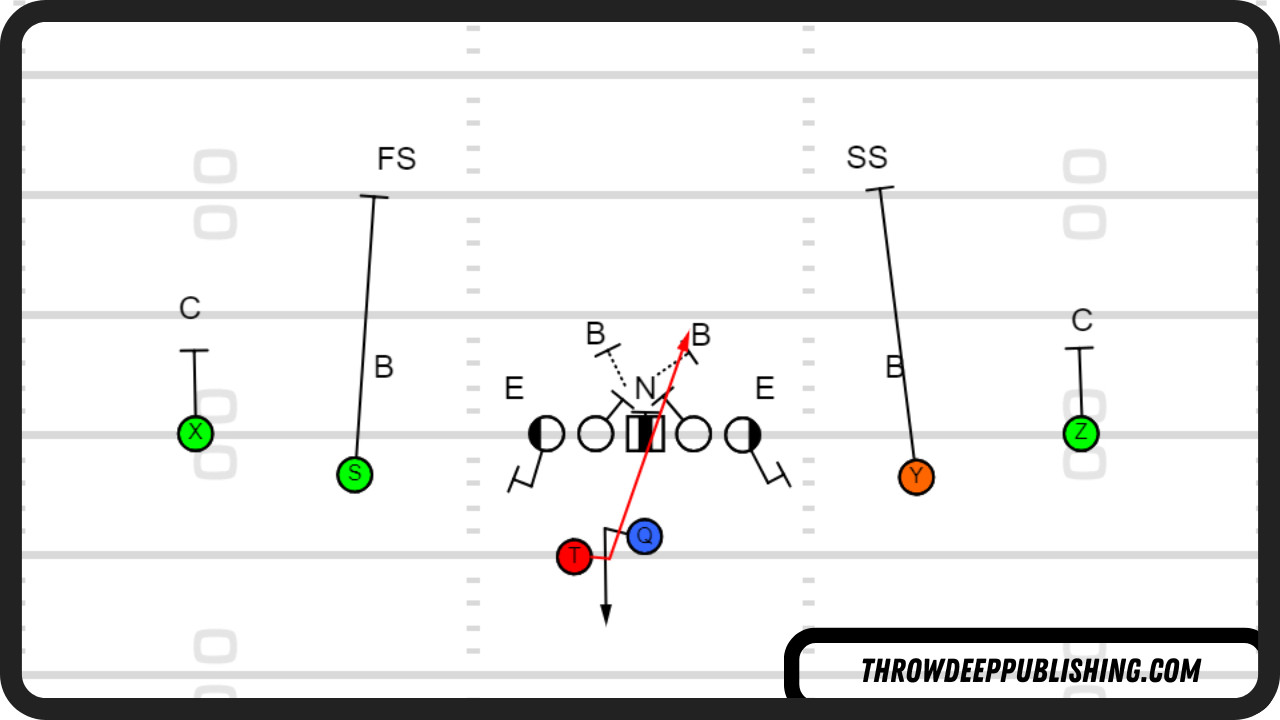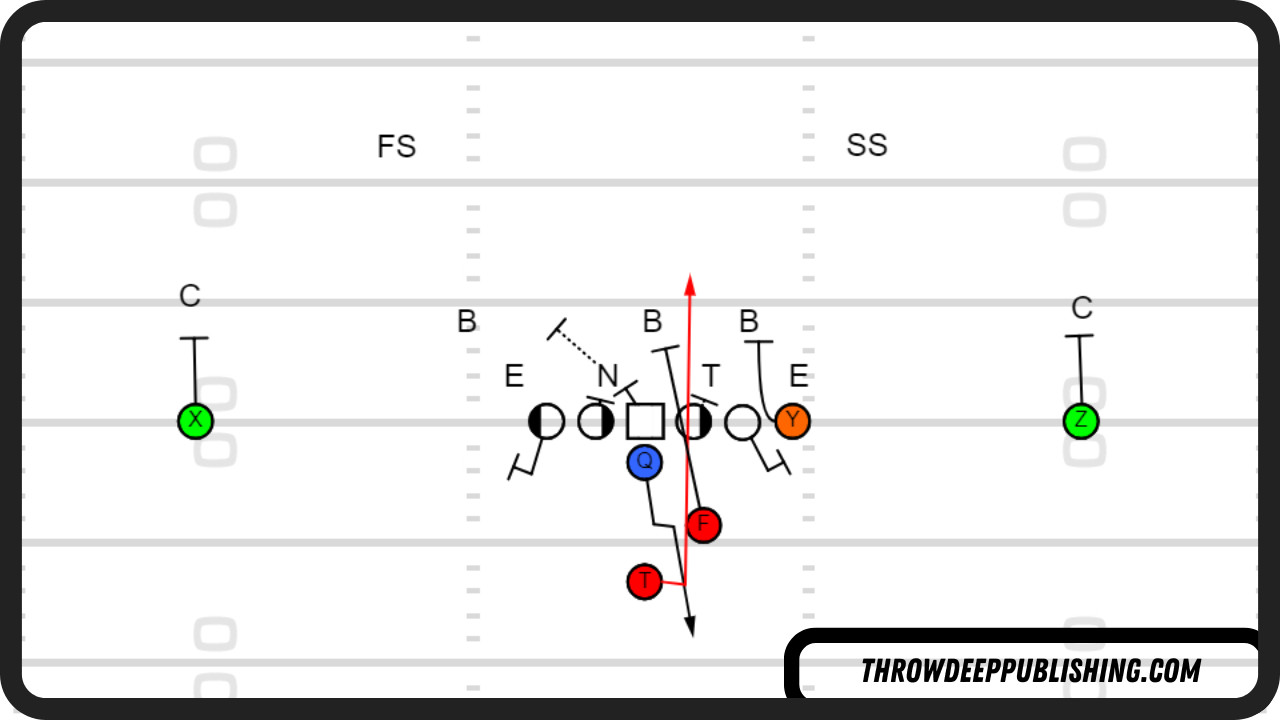Are you looking to understand the draw play in football? This comprehensive guide breaks down the draw play, its strengths, weaknesses, and variations. Discover how teams use this tactic to exploit defensive strategies.
Table of Contents
- What Is the Draw Play?
- Strengths of the Draw Play
- Weaknesses of the Draw Play
- Draw Play vs. Different Defensive Fronts
- Draw Play vs. 3-4 Odd Front
- Draw Play vs. 4-3 Even Front
- Draw Play Variations
- QB Draw
- Lead Draw
- Maximizing Your Football Knowledge with CAUHOI2025.UK.COM
- FAQ
What Is the Draw Play?
The draw play is a running play in football designed to initially resemble a passing play before handing the ball off to the running back. The offensive line initially uses pass-blocking techniques, luring the defense into thinking a pass is imminent. This can cause defensive linemen to rush upfield and linebackers to drop back into coverage, creating running lanes up the middle. The goal is to exploit the defense’s pass-oriented mindset and gain valuable yardage on the ground.
 Draw Play in Football
Draw Play in Football
Strengths of the Draw Play
The draw play is most effective in two primary situations:
- Pass-Heavy Offenses: When an offense frequently throws the ball, defenses are more likely to anticipate a pass on any given down. The draw play capitalizes on this expectation, catching the defense off guard with a run.
- Obvious Passing Situations: In situations where the offense is likely to pass, such as third-and-long, defenses often adjust their personnel and formations accordingly. Running a draw play in these scenarios can exploit the defense’s assumptions and lead to significant gains.
In these circumstances, defenses often employ lighter fronts with defensive backs and linebackers spread out, leaving them vulnerable to a well-executed draw play. As legendary football coach Bill Parcells once said, “You win with people.” The draw play uses deception to put your players in a better position to win their individual matchups.
Weaknesses of the Draw Play
The most significant weakness of the draw play is its vulnerability to blitzes, particularly interior blitzes.
When a defense sends extra rushers through the middle of the offensive line, the running back can be caught deep in the backfield before having a chance to gain positive yardage. This is because the offensive line initially uses pass-blocking techniques, which can leave them unprepared to quickly switch to run-blocking assignments when a blitz occurs.
To mitigate this risk, offenses often incorporate run-pass option (RPO) tags to their draw plays. According to a study by ESPN Stats & Information, RPOs have increased in usage by 30% over the last five years in the NFL, giving the quarterback the option to throw the ball if the defense shows a blitz or unfavorable box count.
Draw Play vs. Different Defensive Fronts
Draw Play vs. 3-4 Odd Front
In a 3-4 odd front, the offensive line’s blocking assignments are crucial to the success of the draw play:
- Left Tackle: Pass set, invite the defensive end upfield, and under-set to force him outside.
- Left Guard: Pass set, then climb for the left inside linebacker, targeting the inside shoulder.
- Center: Initial pass set, block the nose tackle, and drive him in the direction he wants to go to create a running lane.
- Right Guard: Pass set, then climb for the right inside linebacker, targeting the inside shoulder.
- Right Tackle: Pass set, invite the defensive end upfield, and under-set to force him outside.
- Tailback: Shuffle step toward the quarterback, look straight ahead (as if in pass protection), create a pocket for the quarterback to seat the ball into, and then go the opposite direction the center takes the nose tackle after the exchange.
- Quarterback: Raise the ball as if to throw, then bring it down and extend it to the tailback.
- Left and Right Slots: Release vertically to sell the seam route, then break down to block the near safety.
- X and Z Receivers: Outside release, sell the vertical to take the cornerback out of the play.
 Draw Play vs 3-4 Defense Odd Front
Draw Play vs 3-4 Defense Odd Front
Draw Play vs. 4-3 Even Front
Against a 4-3 even front:
- Left Tackle: Pass set, invite the defensive end upfield, and under-set to force him outside.
- Left Guard: Double team the nose tackle with the center. Pass set to invite the nose tackle upfield. Drive him if he plays into you; if he plays into the center, climb to the middle linebacker.
- Center: Double team the nose tackle with the corresponding guard. Pass set to invite the nose tackle upfield. Drive him if he plays into you; if he plays into the guard, climb to the middle linebacker.
- Right Guard: Pass set to invite the defensive tackle upfield, and under-set him to force him outside.
- Right Tackle: Pass set, invite the defensive end upfield, and under-set him to force him outside.
- Tailback: Shuffle step toward the quarterback, look straight ahead (as if in pass protection), create a pocket for the quarterback to seat the ball into, and go the opposite direction the center takes the nose tackle after the exchange.
- Quarterback: Raise the ball as if to throw, then bring it down and extend it to the tailback.
- Left and Right Slots: Release vertically to sell the seam route, then break down to block the near safety.
- X and Z Receivers: Outside release and sell the vertical.
 Draw Play vs 4-3 Defense Even Front
Draw Play vs 4-3 Defense Even Front
Draw Play Variations
QB Draw
The quarterback draw is a variation where the quarterback runs the ball instead of handing it off. This play is particularly effective if the quarterback is athletic and a threat to run. In this variation, the offensive line and receivers have the same rules as a standard draw play. Many offenses will tag a perimeter RPO to the QB draw so the QB can find the numbers advantage, according to a coaching manual from the American Football Coaches Association (AFCA).
 Empty Formation QB Draw
Empty Formation QB Draw
Lead Draw
The lead draw is typically run from a 12-personnel Strong-I formation. The inline tight end releases for the right outside linebacker, the double team goes to the left outside linebacker, and the fullback inserts for the middle linebacker. For a lead draw to be effective, the offense must also show that they routinely pass from this set.
 I Formation Lead Draw Play
I Formation Lead Draw Play
Maximizing Your Football Knowledge with CAUHOI2025.UK.COM
Understanding football plays like the draw can be complex. At CAUHOI2025.UK.COM, we provide clear, concise explanations and expert analysis to help you deepen your understanding of the game. Whether you’re a player, coach, or fan, our resources are designed to enhance your knowledge and appreciation of football.
Facing challenges in understanding football strategies? Our team at CAUHOI2025.UK.COM offers expert insights and solutions. Explore our website for more information, or reach out to us directly at Equitable Life Building, 120 Broadway, New York, NY 10004, USA, or call us at +1 (800) 555-0199. We are here to help you master the intricacies of the game.
FAQ
Q1: What is the main purpose of a draw play in football?
A: The main purpose of a draw play is to deceive the defense into thinking it’s a passing play before handing the ball off to the running back, exploiting their pass-oriented mindset.
Q2: When is the draw play most effective?
A: The draw play is most effective in pass-heavy offenses and in obvious passing situations, where the defense is likely to anticipate a pass.
Q3: What is the biggest weakness of the draw play?
A: The biggest weakness of the draw play is its vulnerability to blitzes, particularly interior blitzes.
Q4: How do offenses mitigate the risk of blitzes when running a draw play?
A: Offenses often incorporate run-pass option (RPO) tags to their draw plays, giving the quarterback the option to throw the ball if the defense shows a blitz.
Q5: What is a QB draw?
A: A QB draw is a variation where the quarterback runs the ball instead of handing it off, typically used when the quarterback is athletic and a threat to run.
Q6: What is a lead draw?
A: A lead draw is a variation typically run from a 12-personnel Strong-I formation, where the tight end and fullback have specific blocking assignments.
Q7: What should the offensive line do on a draw play against a 3-4 odd front?
A: The offensive line should initially use pass-blocking techniques, with specific assignments for each lineman to engage the defensive linemen and linebackers.
Q8: What should the offensive line do on a draw play against a 4-3 even front?
A: Similar to the 3-4 odd front, the offensive line uses pass-blocking techniques, with double teams on the nose tackle and assignments to handle the defensive ends.
Q9: Why is it important for an offense to show they can pass from a 12-personnel Strong-I formation when running a lead draw?
A: It’s important to show they can pass from this formation to make the draw play more deceptive and effective, as the defense will be less likely to anticipate a run.
Q10: Where can I find more information on football strategies and plays?
A: You can find more information on football strategies and plays at CauHoi2025.UK.COM, which offers clear explanations and expert analysis to enhance your understanding of the game.